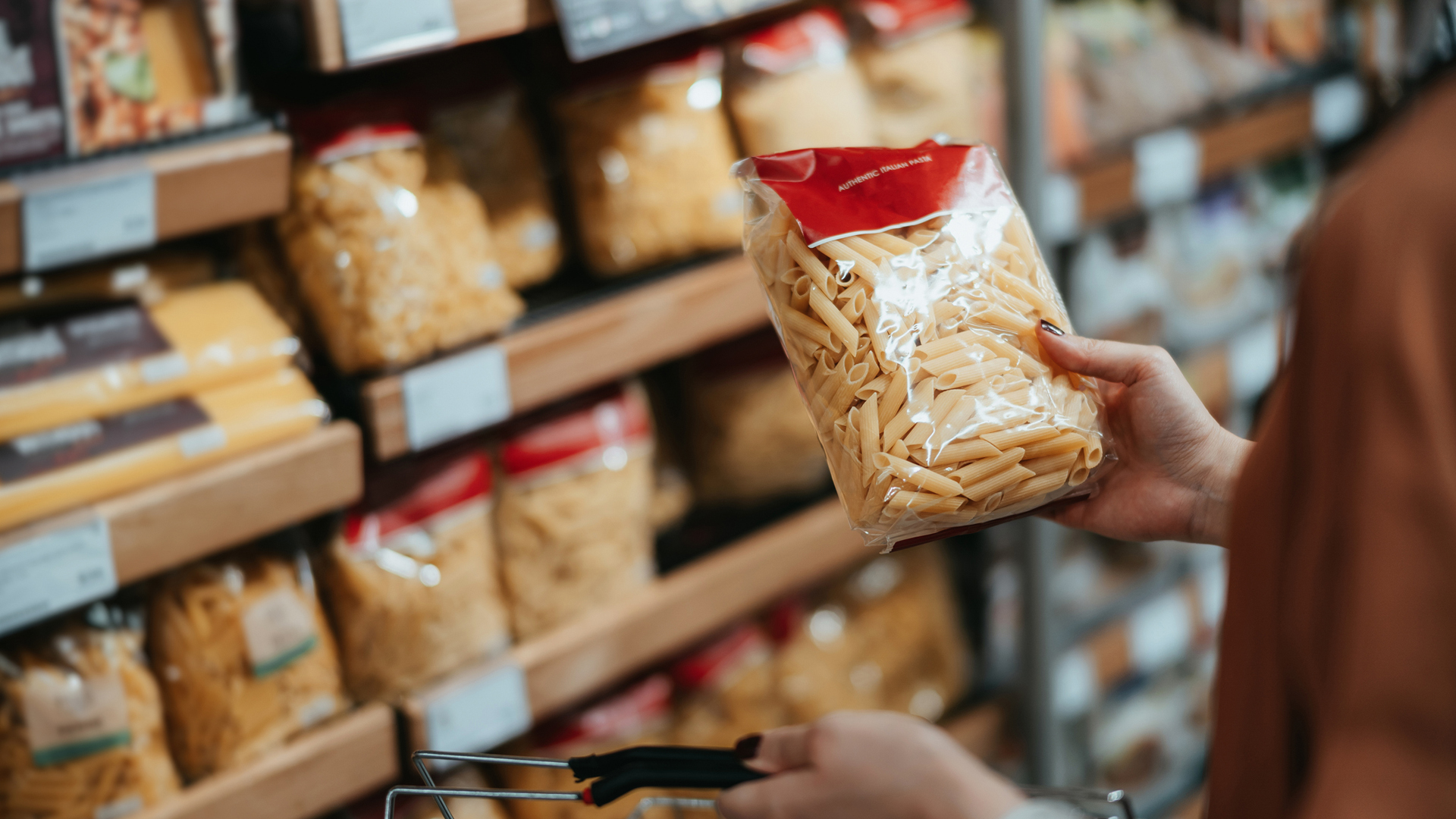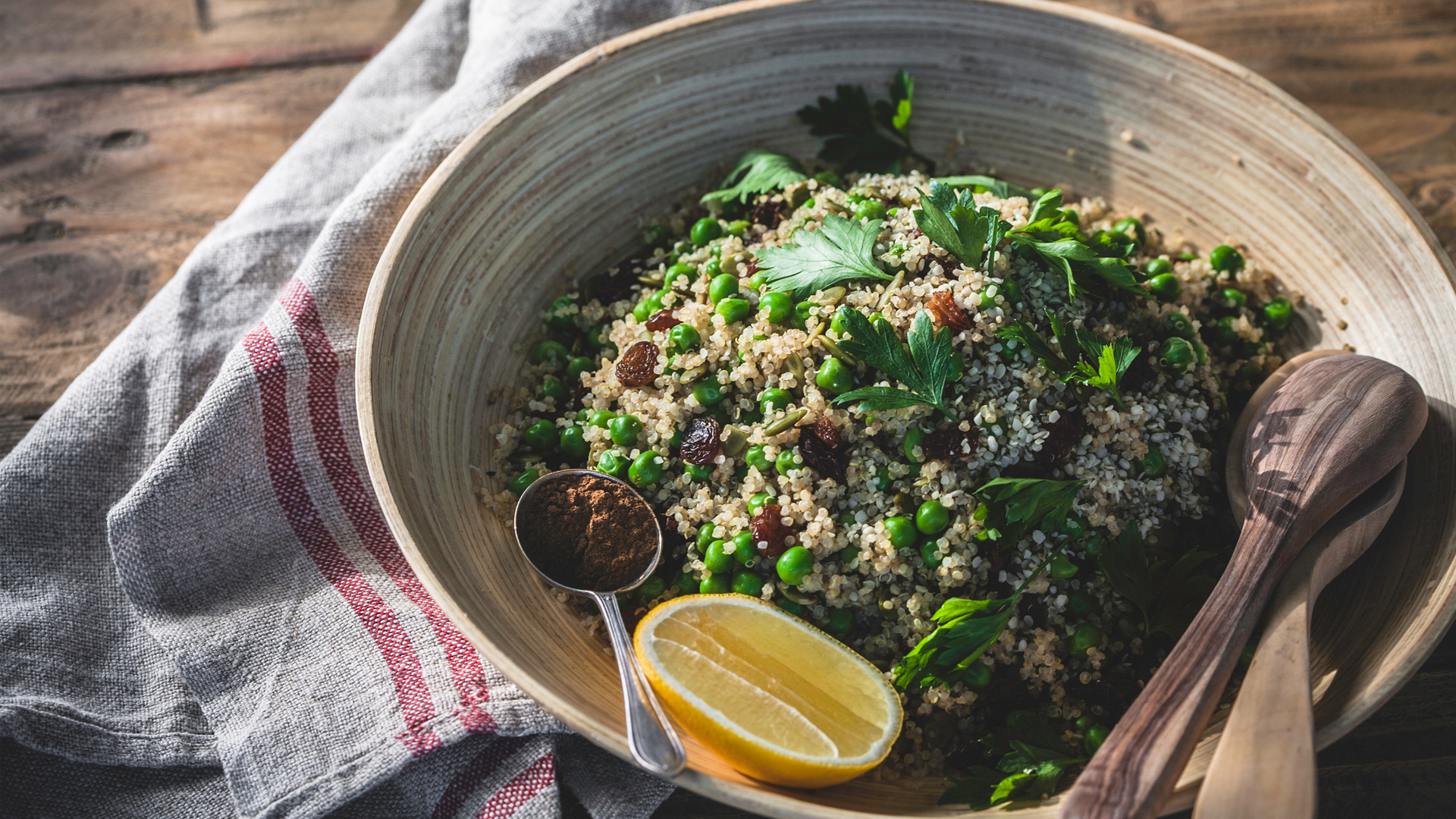Gluten-Free diet: Benefits & risks
Everything you need to know about following a gluten-free diet, from what foods to avoid, to potential risks

Gluten can be a dietary irritant for lots of people, triggering uncomfortable gastric symptoms such as cramps, gas and diarrhoea. Thankfully, the gluten-free diet is a fairly simple one to follow, with plenty of gluten-free alternatives available to buy in supermarkets and more and more restaurants offering gluten-free meal options for those who can’t digest it.
While gluten sensitivity can be uncomfortable, celiac disease is an autoimmune condition that can have a huge impact on overall health. For those with celiac disease, even tiny traces of gluten caused by cross contamination via shared equipment can trigger symptoms. As such, a gluten-free diet for celiacs might be a stricter affair than those with gluten sensitivity. Eating at restaurants may involve asking that gluten-free food is prepared completely separately with sterile equipment, and gluten-free products made in factories that manage other products containing gluten might be a no-go.
With this in mind, are there any benefits of a gluten-free diet? Can you use gluten-free diet for weight loss? What are some grains that are gluten free? Read on for everything you need to know about going gluten-free.
What is gluten?
Gluten is a protein found in grains such as wheat, rye or barley, with which we make starchy foods like pasta, bread or couscous.
Dr. Marion Sloan, a GP and Chair of the Primary Care Society for Gastroenterology in the UK, told Live Science: “Gluten is a protein in the seed. Avoiding wheat, rye or barley will enable a gluten-free diet. It's tricky, though, as gluten sneaks into lots of foods in preparation and cooking as it's an inexpensive ingredient.”
The USDA guidance for 2020-2025 recommends basing your meals around starchy foods, and while some starchy foods such as rice or potatoes are naturally gluten-free, you may find some common meals are off the table on the gluten-free diet. Most people can digest gluten and pass it through their systems without problems, but for those with celiac disease, a wheat allergy or gluten intolerance, their bodies struggle to process it.
Celiac disease occurs in around 1% of the population, according to a study in the Lancet journal. If you suspect you may not be able to tolerate gluten, you should speak to your doctor and get proper testing and treatment.
What is a gluten-free diet?
A gluten-free diet removes or replaces gluten in order to control symptoms of celiac disease, wheat allergy or gluten sensitivity. While there are plenty of gluten-free alternatives to wheat-based foods, you may find that a successful gluten-free diet relies more on basing meals on other grains such as rice and corn, or starchy vegetables like potatoes and yams.
Gluten-free foods tend to be heavily processed to imitate products like bread and pasta, so for general health it can be better (and cheaper) to find fresh alternatives and eat as many unprocessed foods as you can. Processing can also cause contamination and some gluten-free alternatives are made in factories that still handle wheat products and may therefore contain trace amounts of gluten. This is something generally stated on the label, similar factories that handle nuts.
However, completely removing processed foods is unsustainable for most people. Foods like pasta and bread are convenient and easy to prepare, which makes them a good staple when you have little time to cook. If this is the case for you, carefully read the labels of foods claiming to be gluten-free to ensure that there is no cross-contamination risk.
Dr. Sloan tells Live Science that most food groups are fine to keep eating with celiac disease or gluten sensitivity. “Rice, potato and cornflour, which is made from maize, do not contain gluten so would be fine.”
Gluten-free diet benefits
While most people won’t experience any particular benefits from cutting out gluten, for those removing gluten due to intolerance or celiac disease, going gluten-free can be life changing. For those with celiac disease, gluten causes damage to the small intestine, which can lead to nutrient deficiencies due to malabsorption. By removing gluten from the diet, the condition can be managed and the gut is given a chance to heal.
“Avoiding gluten stops the response in the bowel lining, meaning the bowel remains healthy and able to continue its job of absorbing all the nutrients of digested food,” she says. “If the bowel wall is inflamed by an ongoing allergic reaction, the wall is damaged and cannot absorb efficiently. This causes lack of absorption of many nutrients, but in particular iron and folate.”

For those with an IgE-mediated allergy, often a wheat allergy, their symptoms may differ from those with celiac disease, but similarly they will find that avoiding wheat products will help to control their symptoms. While it isn’t gluten they are reacting to, they may find a gluten-free diet the most effective for them.
For those with non-celiac gluten sensitivity, eating gluten won’t cause any actual damage, but they may struggle to digest it, causing symptoms such as bloating, diarrhoea and gas. These symptoms can be very painful, so following a gluten-free diet may also help these individuals stay symptom free and happy. Non-celiac gluten sensitivity is an intolerance rather than a disease, so the level of sensitivity to gluten may be lower. You may not need to avoid cross-contamination if you have this condition because it’s not an allergy or a disease and trace amounts may not be triggering for you.
What to eat & what to avoid on a gluten-free diet
What to avoid:
- Wheat products such as bread, pasta, couscous and cereals (bear in mind some porridge oats might contain gluten from cross-contamination)
- Rye products such as crackers and rye bread
- Beer
- Pastries and pies
- Cakes and cookies
What to eat:
- Potatoes, yams or sweet potatoes
- Fruit and vegetables
- Grains such as quinoa, rice and corn
- Legumes and legume products, such as tofu
- Flour alternatives such as rice and potato flour
- Seeds and nuts in their natural, unprocessed form
- Fresh eggs
- Fresh meat, poultry and fish (not marinated, breaded or batter-coated)
Gluten-free diet: risks and considerations
Many people on gluten-free diets don’t have a medically needed dietary restriction and eat gluten-free as a fad diet.
A study in the Critical Reviews in Food Science and Nutrition journal indicates that adherence to a gluten-free diet is completely pointless unless you have celiac disease, IgE-mediated allergy or non-celiac gluten sensitivity.
“Personally I do not believe there is a benefit to eating gluten-free if you don't have a gluten intolerance," adds registered dietitian Jessica Fishman Levinson. "Many people think gluten-free food is healthier — lower in calories, lower in fat, etc. — but that is not always the case."
Dr Sloan also mentions the expense of eating gluten-free branded products. “The gluten-free diet is potentially more expensive to a point where folk say they can't adhere to that diet as it costs too much,” she says.
Another risk of going gluten-free is missing out on a healthy, well-balanced diet. With this in mind, it’s important to ensure that you are educated on how to eat gluten-free without relying too much on special products and processed food.
"If gluten-containing products are replaced with highly processed gluten-free foods like pastries, energy bars, etc., you will not lose weight and you may in fact gain weight as many GF foods are higher in calories than their gluten-containing replacements,” adds Levinson.
The Mediterranean diet can be a good place to start, as it contains lots of fresh fish, meat, fruits and vegetables which are naturally gluten-free.
Additional resources
Sign up for the Live Science daily newsletter now
Get the world’s most fascinating discoveries delivered straight to your inbox.

Lou Mudge is a health writer based in Bath, United Kingdom for Future PLC. She holds an undergraduate degree in creative writing from Bath Spa University, and her work has appeared in Live Science, Tom's Guide, Fit & Well, Coach, T3, and Tech Radar, among others. She regularly writes about health and fitness-related topics such as air quality, gut health, diet and nutrition and the impacts these things have on our lives.
She has worked for the University of Bath on a chemistry research project and produced a short book in collaboration with the department of education at Bath Spa University.
- Alina BradfordLive Science Contributor










